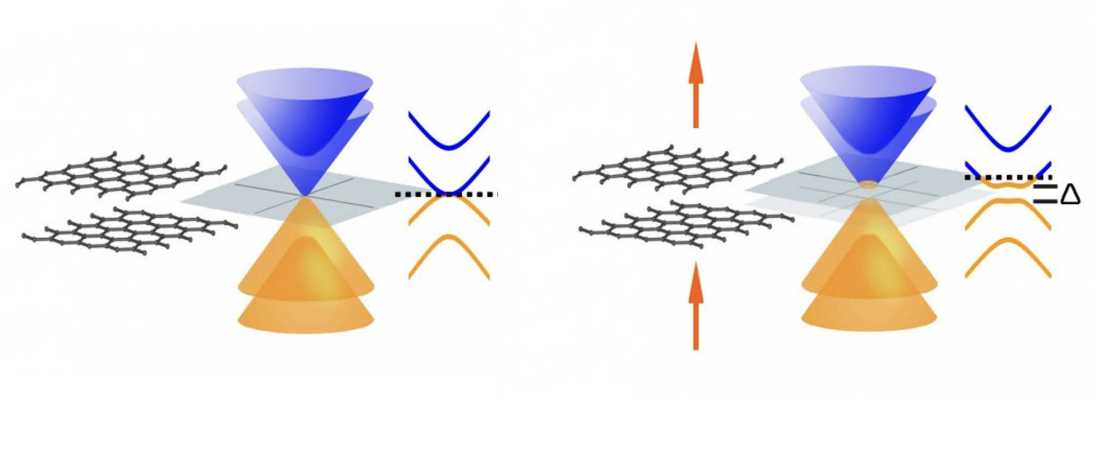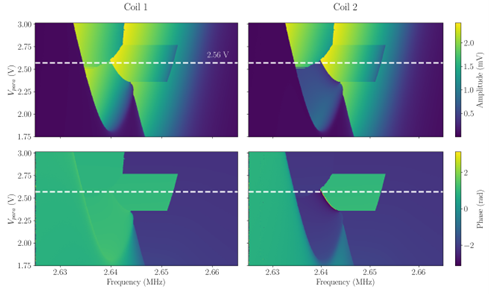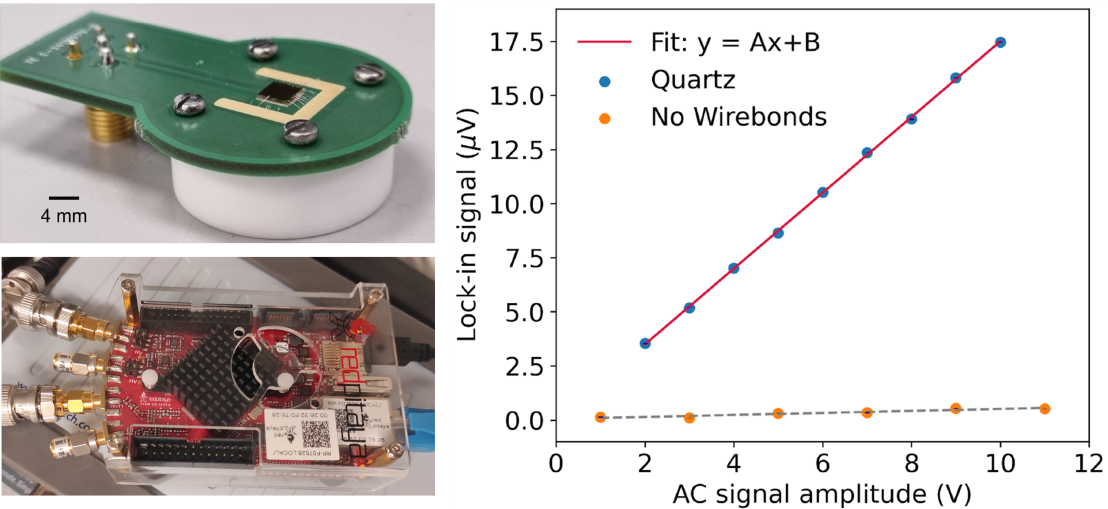Projects 2022
Frequency Multiplexing of charge lines for Transmon Qubits

by Daniel Veldhuizen, Kewei Zhou, Francesco Maria Ruscio, Henrik Tuschla
Host laboratory: Wallraff Group
Abstract: Scaling up the number of qubits is an important consideration when evaluating the various approaches to quantum computer hardware implementations. For superconducting qubits, the number of qubits on a chip is restricted by the maximum number of lines that can fit inside a cryostat. In this Quantech project, we studied frequency-multiplexed control schemes for superconducting qubits, which means using a single charge line to manipulate the state of multiple qubits at different frequencies. With this approach, the number of qubits that fit inside the dilution refrigerator increases by 50% with multiplexing of five qubits. We first modeled different multiplexing schemes using classical circuit analysis. With response function simulations, we observed suppression of untargeted qubits with off-resonant drives. We also examined qubit fidelity as a function of detuning between the two qubits using QuTip simulations. With the parameters we found in the simulations, we designed and fabricated multiplexed two-qubit chips. Measurements were performed in a dilution refrigerator to access the results of multiplexing.
Single - electron Two-qubit System in Bilayer Graphene

by Dario Denora, Alexander Jürgens, Nicola Meggiato, Emre Yazici
Host laboratory: Luisier Group
Abstract: In this Quantech workshop project, we propose and develop an ab-initio simulation framework capable of simulating graphene spin qubit. We include the spin degree of freedom in the charge qubit architecture based on bilayer graphene. Furthermore, we propose a mechanism for controlling the spin qubit as well as coupling the two degrees of freedom, allowing universal unitary manipulation of the four-dimensional space. The goal of this project is the detailed formulation of the architecture and the numerical simulation of the said system. For the spin manipulation, the best approach to avoid the presence of an AC magnetic field, that in principle may influence the charge qubit functionalities, is by electric dipole spin resonance controlled by the spin-orbit coupling. This is necessary to perform arbitrary qubit rotations employing a time dependent electric field applied through the gates. Our simulation results reveal that this experimental potential quantum computing platform has been fleshed out to a substantial degree, offering a promising foundation for future research and development.
Introducing and External Force into an Ising Simulator

by Pablo´Alvarez, Davide Pittilini, Filippo Miserocchi, Sathyanarayanan Raamamurthy
Host laboratory: Degen Group
Abstract: Ising spins can be represented as phase space states of Kerr parametric oscillators (KPOs). For this reason, networks of coupled KPOs have been proposed as Ising machine simulators and have recently been subject of substantial interest. In this work we explore the rich and intricate dynamics of two coupled KPOs under the influence of an external resonant drive through both numerical and experimental approaches. Preliminary exploration of the system at hand was carried out through numerical simulations using the harmonic balance method on a flexible high-performance Julia evaluation framework. Real-world KPOs have been realized as parallel RLC oscillating circuits which exploit the nonlinear capacitance characteristics of varactor diodes. Once the two coupled unperturbed devices had been proved to work as expected from previous works, the external force perturbation was observed to alter the dynamical properties of the network as highlighted by the measured Arnold tongues. Of particular interest was the symmetry of stable solutions, where we were able to observe parametric symmetry breaking induced by the perturbation. Once calibrated against the measured data, the numerical results were found to qualitatively match the experimental findings.
Investigating the Piezoelectric Properties of a Quantum Acoustic Transducer

by Luis Fernández-Martínez, Raquel García-Bellés, Clara Henke
Host laboratory: Chu Group
Abstract: Circuit quantum acoustodynamics (cQAD) deals with the manipulation and measurement of mechanical resonators with the use of superconducting quantum circuits. This interaction between the two systems is often enabled by piezoelectricity: a property of some materials by which they are able to expand and contract when subject to an electric field. A particular example of a cQAD device consists of a superconducting qubit strongly coupled to a high-overtone bulk acoustic-wave resonator (HBAR), made of a piezoelectric thin film (aluminium nitride) over a substrate (sapphire). In a series of experiments, it has been observed that the predicted value of the coupling strength does not match the experimental results. The supposed origin of this mismatch is the undetermined value of the AlN piezoelectric constant. In this project, we perform an independent measurement of this piezoelectric constant for the actual samples used by the Hybrid Quantum Systems group. The method that we use consists in measuring the material’s displacement when applying a certain voltage by using a high-precision Michelson interferometer. The use of a control system and lock-in detection enables us to measure displacements in the picometer range. Besides the aluminium nitride, we also perform test measurements on a commercial piezo stack and X-cut quartz. Our results fall in the same order of magnitude as the literature values. Our setup also has the potential to investigate the frequency dependence of these piezoelectric constants, and to be adapted to perform measurements at cryogenic temperatures.
Ab initio molecular dynamics with hybrid quantum-classical algorithm

by Martynas Skrabulis, Petia Arabadjieva, Yixiao Wang, Timothee Dao
Host laboratory: external page IBM Zurich
Abstract: The advent of quantum computers promises great potential in solving tasks computationally impossible for classical computers, therefore urging the synchronous development in hardware design, as well as quantum algorithms. In this proposal, we focus on one particular application of quantum computing, ab initio molecular dynamic (MD) in the canonical ensemble. We adapted an existing method to calculating the friction matrix, which is proportional to the covariance matrix of different force components. Instead of evaluating each component independently, we measure the Pauli strings shared by the force operators only once per iteration and recombine them to get the forces. The noises of the force components become correlated to each other and the covariance becomes non-zero. Limited by the available classical and quantum computing resources, the simulations are only conducted on the two simplest molecules, H2 and H3. For H2, we found that the time evolution of bond length from periodic oscillation to noise driven motion, as well as demonstrate that the distribution of bond length fit well with the canonical distribution, thereby justify the application of Langevin equation and canonical ensemble. Also, for H3 molecule, the developed method shows a decreasing in runtime up to linearly in the number of atoms. With more questions left to be explored, we can still conclude that the classical-quantum hybrid algorithm developed in this work realizes the linear speedup and effectively makes use of the statistical noise.